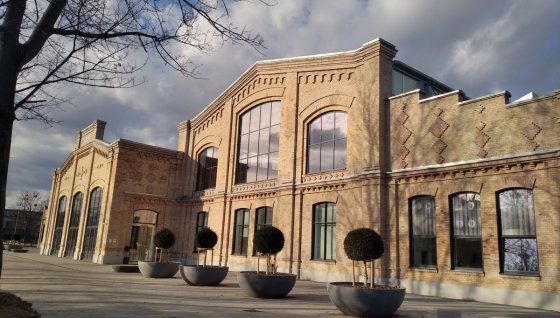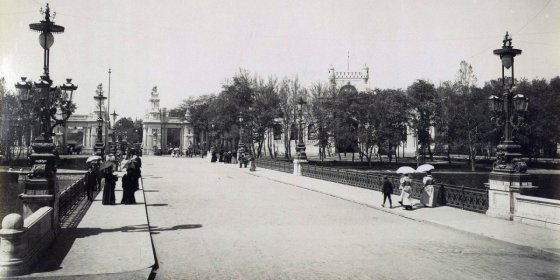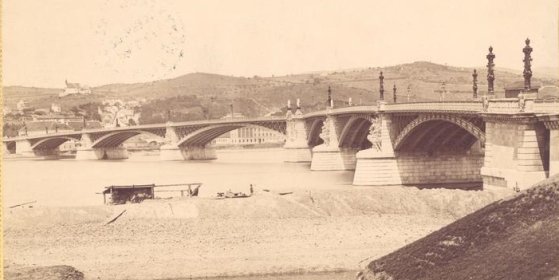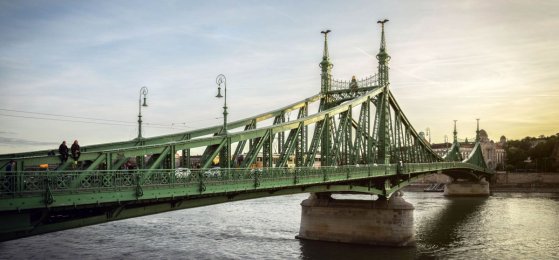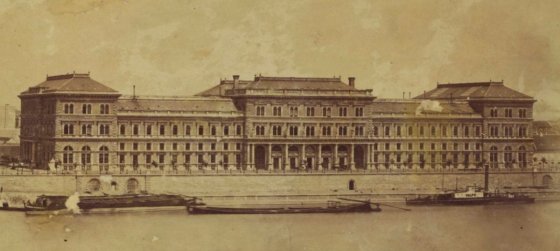 The „intertwined history” of the bridges and the city of Budapest
Which ideas and events have shaped the fate of bridges of Budapest and the cityscape? Alongside many other interesting facts, this question is also answered this newly published book by the Budapest City Archives, which introduces the history of bridges in Budapest.
The „intertwined history” of the bridges and the city of Budapest
Which ideas and events have shaped the fate of bridges of Budapest and the cityscape? Alongside many other interesting facts, this question is also answered this newly published book by the Budapest City Archives, which introduces the history of bridges in Budapest.
János Feketeházy
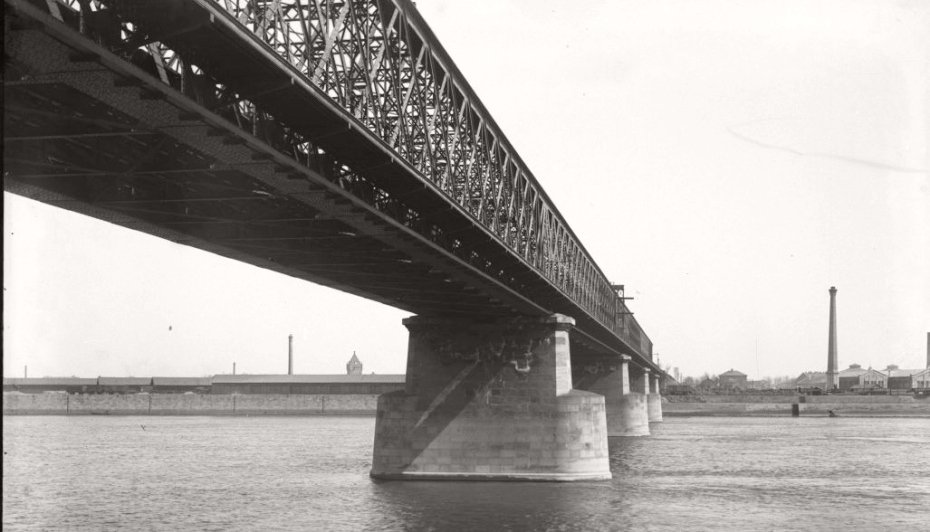 Trains have been able to cross between Pest and Buda for 145 years
Trains have been able to cross between Pest and Buda for 145 years
October 24, 2022 at 12:30 PM
The most important Hungarian railway bridge was handed over on 23 October 1877 on the southern border of Budapest at the time. It served railway traffic for only 36 years. The construction of the original structure was accompanied by many disputes, and several lawsuits were started after the investment was completed.
The first Danube bridges in Budapest were designed by foreigners - English and French engineers were commissioned
March 25, 2022 at 9:00 AM
Although the construction of bridges has a long tradition in Budapest, in the XIX. century there was not enough expertise and technology at home for this job for a long time. Foreign engineers also originally built the Chain Bridge, the Margit Bridge and the Railway Bridge. The first completely Hungarian Danube crossing was the Ferenc József Bridge, which was built in 1896 for the celebration of the millennium of Hungary.
Wonder in Kőbánya - We went to the Eiffel Art Studios
February 19, 2022 at 9:00 AM
The Eiffel Art Studios of the Hungarian State Opera is one of the new attractions of the 10th District and of the whole of Budapest. From the former Északi Járműjavító [Northern Locomotiv Workshop] of MÁV, it has become a cultural centre offering colourful programs, while also helping the operation of the Opera. Not only is the Art Studios [Műhelyház in Hungarian, meaning Workshop] interesting because of its complex function, but the recently completed renovation of the hall, originally built in 1886, has also been a great success.
Városliget Bridge and Margit Island Water Tower - Budapest owes much to Szilárd Zielinski
January 18, 2022 at 9:00 AM
The first Hungarian doctor of engineering was appointed 120 years ago, on 17 January 1902. He was Szilárd Zielinski, who, in addition to writing his doctoral dissertation on a railway system under Budapest, was one of the pioneers of reinforced concrete construction and provided the city with a number of emblematic structures. Without him, the Margit Island Water Tower, the bridge named after him over Lake Városliget, but also the Chain Bridge would be different.
A French bridge in Budapest - The Paris engineer submitted the plans for the Margit Bridge 150 years ago
December 1, 2021 at 10:00 AM
The designer and contractor were sought for the Margit Bridge in an international design competition. There was a lot of discussion about the location of the bridge, as the second bridge of Budapest, which was still waiting to be united at the time, was imagined by many people elsewhere, in the southern part of the city. The tender was won by a French engineer who also built the bridge, which was very similar to the way we know Margit Bridge today.
Miracle in green: Liberty Bridge, one of the most beautiful ornaments of Budapest, is 125 years old
October 4, 2021 at 9:00 AM
Liberty Bridge is 125 years old. Budapest's shortest Danube bridge hides many interesting things. At the time of its handover, in the year of the millennium, Franz Joseph hammered the last silver rivet in, its colour has been blue and gray in addition to green, they wanted to demolish it once, and at its renovation before the regime change they placed back the historical Hungarian coat of arms cunningly.
Green Liberty – The decision to repaint Szabadság Bridge to its original green was reached 35 years ago
October 17, 2020 at 11:00 AM
Following a tragedy in Vienna, abridge renovation project was launched in Budapest in 1979. Szabadság Bridge was slated for renovation in 1981, however, was eventually prioritised due to urgent work. Despite this, the bridge was closed again in 1985, as the original steel support columns had been corroded so significantly they became unstable. However, during this second renovation, the decision to repaint the bridge to its original green was also made.
Replanned twice by the great Ybl – Construction of the Main Customs House began 150 years ago
September 30, 2020 at 10:00 AM
The stunning Renaissance revival palace of the Main Customs House by Miklós Ybl is better known today as Corvinus University. The building has defined the view of the Danube embankment since its completion. A lesser-known fact about the building is that it was initially planned for Kossuth Square. Foundation work began but later stopped when Gyula Andrássy (the prime minister in office at the time) supported the Budapest City Council in the dispute about the site. The building was moved to Ferencváros, and Ybl was forced to redraw his plans for the palace twice before construction began 150 years ago.
More articles
 The „intertwined history” of the bridges and the city of Budapest
Which ideas and events have shaped the fate of bridges of Budapest and the cityscape? Alongside many other interesting facts, this question is also answered this newly published book by the Budapest City Archives, which introduces the history of bridges in Budapest.
The „intertwined history” of the bridges and the city of Budapest
Which ideas and events have shaped the fate of bridges of Budapest and the cityscape? Alongside many other interesting facts, this question is also answered this newly published book by the Budapest City Archives, which introduces the history of bridges in Budapest.
 The Bridge Report, which brought a turning point in the history of Budapest
A travel report that changed the history of Pest and Buda, as well as Hungary. The little book contributed to the change of half a thousand years of legal customs and the implementation of an investment of unprecedented size and technical quality. This book was The Bridge Report [Hídjelentés in Hungarian].
The Bridge Report, which brought a turning point in the history of Budapest
A travel report that changed the history of Pest and Buda, as well as Hungary. The little book contributed to the change of half a thousand years of legal customs and the implementation of an investment of unprecedented size and technical quality. This book was The Bridge Report [Hídjelentés in Hungarian].
 Drama on the university wall - The heroic monument was planned 95 years ago
In the constant hustle and bustle of the Egyetem Square in Pest, the students may not even notice the monument that decorates the short section of wall between the church and the central building of ELTE. However, it commemorates their predecessors, the heroes who fought for their country in World War I, and those who heroically helped them. The first design of the dramatically collapsing soldier was born in 1928, ninety-five years ago.
Drama on the university wall - The heroic monument was planned 95 years ago
In the constant hustle and bustle of the Egyetem Square in Pest, the students may not even notice the monument that decorates the short section of wall between the church and the central building of ELTE. However, it commemorates their predecessors, the heroes who fought for their country in World War I, and those who heroically helped them. The first design of the dramatically collapsing soldier was born in 1928, ninety-five years ago.


